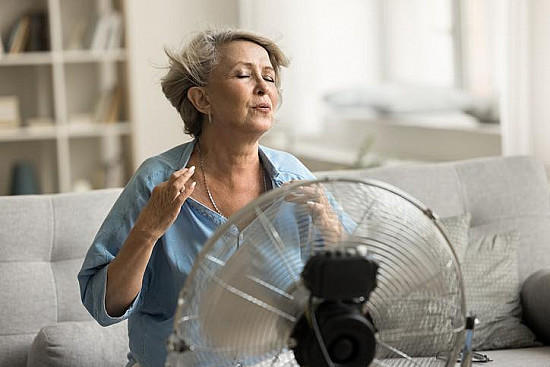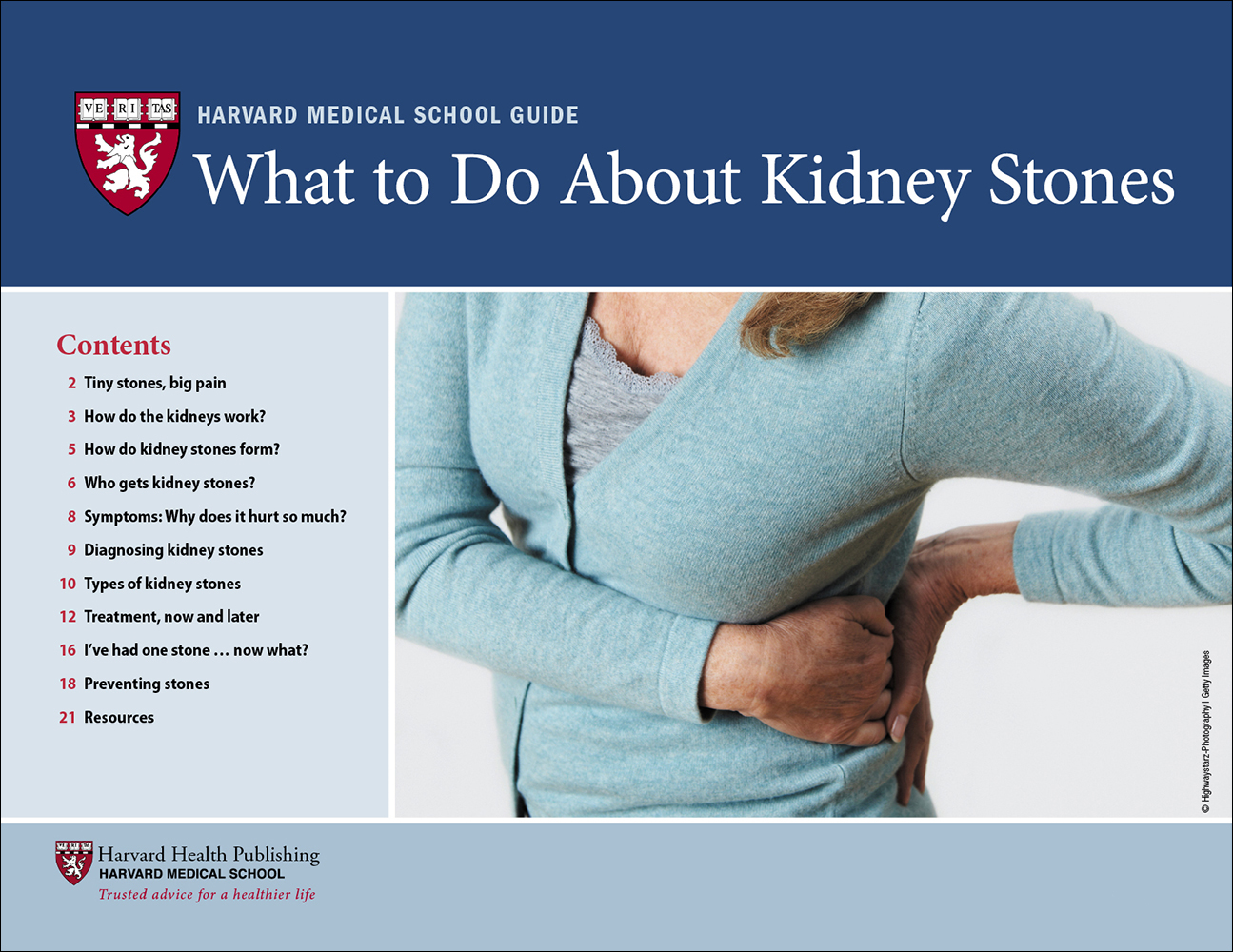Kidney stones: From agony to action
Learn how to spot and prevent this increasingly common urinary condition.
- Reviewed by Toni Golen, MD, Editor in Chief, Harvard Women's Health Watch; Editorial Advisory Board Member, Harvard Health Publishing; Contributor

Here’s a surprising tidbit: many of us are likely walking around with something lurking inside us that could suddenly give rise to a burst of pain — one or more kidney stones.
Formed from minerals and acid salts in the urine, these hard deposits are becoming increasingly common. About one in 10 people will have a symptomatic kidney stone at some point in their lives — more than double the proportion in the 1970s, according to the National Kidney Foundation. Some 500,000 Americans seek care in emergency rooms each year because of the condition.
If you’ve been one of them, you’ll probably never forget the experience. Ranging from as small as a pencil point to as large as a golf ball, kidney stones can lead to excruciating waves of pain in the back as well as blood in the urine, nausea, vomiting, fever, and chills.
Dr. Andrew A. Wagner, chief of urology at Harvard-affiliated Mount Auburn Hospital, believes many of us have kidney stones but aren’t aware of them. They don’t cause symptoms unless they get stuck in the ureter, the tube that carries urine from the kidney to the bladder. When that happens, urine backs up into the kidney, which swells and protests in pain.
“It’s pretty unmistakable pain, because it tends to be in the flank area where the kidneys are. Women who’ve had children say it’s neck-and-neck with the pain of childbirth,” Dr. Wagner says. “But you may have a stone that’s been growing over the years that’s silent.”
Who’s vulnerable
Normal urine has various waste products in it, which typically flush easily out of your system. These include minerals (such as calcium and sodium) and acids (such as oxalate and uric acid). But tiny crystals can form from these waste products, especially when they’re surrounded by too little liquid. Such a crystal may gain layers over time to form a solid mass.
Who’s more likely to develop kidney stones? The disparate array of contributors include family history, pregnancy, obesity, high blood pressure, gastric bypass surgery, and consuming foods with high amounts of salt or sugar. All of these situations can prompt the body to produce higher amounts of metabolites — substances in urine that can form into kidney stones.
But the biggest risk factor is not consuming enough fluid each day, Dr. Wagner notes. “Folks who have kidney stones tend not to hydrate sufficiently,” he says.
Downstream health implications
To confirm a kidney stone diagnosis, your doctor will likely perform a CT scan, which is the best way to pinpoint a stone’s size and location. People who’ve had one are at much higher risk of another within five to seven years. But there are other downstream health consequences as well, including greater odds of developing kidney infections, chronic kidney disease, or even kidney failure. “There’s no question that stones can be dangerous to the kidney’s function,” Dr. Wagner says.
The vast majority of kidney stones pass on their own, which can be an uncomfortable, days- or weeks-long process better tolerated with the use of over-the-counter pain relievers. If a stone won’t pass but is leaving you in agony, one commonly used intervention is shockwave lithotripsy, which uses high-energy sound waves to blast the stone into tiny pieces that are more easily passed in urine.
Another very common treatment is ureteroscopy, in which a specialist inserts a scope through the ureter to retrieve the stone or destroy it with a tiny laser fiber. Occasionally, more invasive surgical procedures are required to treat large or complicated stones.
Prevention strategies
If you’ve never had a kidney stone, the best way to keep it that way is to hydrate. That means drinking about two liters (eight cups) a day of nonalcoholic, noncaffeinated beverages, which will keep urine less concentrated with waste products, Dr. Wagner says. You can also drink fresh lemon juice or take citrate pills, both of which contain citrate, which inhibits stone formation.
People hoping to prevent a second or subsequent kidney stone can tap a longer list of preventive tactics, such as
- cutting salt intake
- maintaining a healthy weight
- eating fewer items containing oxalate, which is rich in in foods such as spinach, almonds, peanuts, berries, and chocolate, to decrease the risk of calcium oxalate stones
- limiting red meat, organ meats, shellfish, and other purine-rich foods, which helps reduce uric acid levels.
Image: © Tharakorn/Getty Images
About the Author

Maureen Salamon, Executive Editor, Harvard Women's Health Watch
About the Reviewer

Toni Golen, MD, Editor in Chief, Harvard Women's Health Watch; Editorial Advisory Board Member, Harvard Health Publishing; Contributor
Disclaimer:
As a service to our readers, Harvard Health Publishing provides access to our library of archived content. Please note the date of last review or update on all articles.
No content on this site, regardless of date, should ever be used as a substitute for direct medical advice from your doctor or other qualified clinician.
















